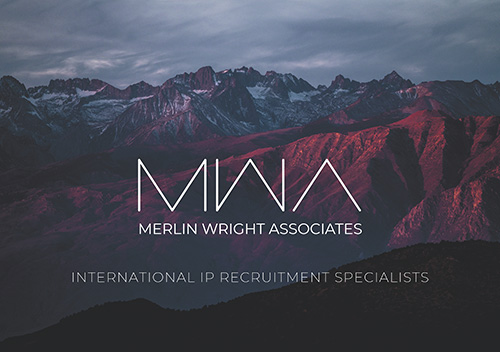How to Conduct More Effective Virtual Job Interviews
The current global situation has forced companies to adopt a new era of business communication, whether they want to or not. Many organisations are now familiar with conducting a first-line video interview, partly as a cost and time efficient model to the interview process. However, in nearly all cases, companies are having to carry out the majority of the process in this virtual setting, with the final decision made on the selected candidate in a face-to-face or even to engage the candidate without a physical meeting.
The following considers the challenges and issues in running virtual interviews. These are based on our own experiences as well as research provided from leading headhunters and client organisations across our network.
Pre-interview:
The preparation stage for a virtual interview is often underestimated and yet this is a vital aspect to ensuring both parties receive a positive experience. Too often we have found both clients and candidates unable to establish the video link due to poor connection or lack of understanding of the technology. There is an increasing number of online video platforms that are available and whilst the client may be very comfortable with using their own system, this may not be the case for the candidate.
Another aspect to the pre-interview phase is the importance of preparation and communication with other panel interviewers, if this is to be the arrangement. If there is not a defined leader to the panel interview, then the likelihood of an interview which does not flow, will be very high.
Additionally, building rapport has become much harder to achieve when carrying out a virtual interview. You can no longer warm-up into the discussion during a walk to the coffee machine. Therefore, it is more important than ever to do your candidate career history preparation before the interview. If you are frequently referring to your notes or another monitor when asking questions, it will become much harder to ‘connect’ with the interviewee.
Pre-interview checklist:
- Set up the process for the interview and ensure this is communicated to your colleagues: if it is a one-to-one interview, there still needs to be consistency in the process. For a panel interview, where the interviewers may be at other locations, agree on who will be the Chair and what this person needs to communicate to the candidate prior to the interview.
- Check the technology: this is often overlooked but is crucial to ensuring that the time spent in the interview is for the interview and not for trying to set up the video session. There are multiple platforms now to consider including Zoom, Skype, Webex, BlueJeans, MS Teams, Google Hangouts. Choose one which is the least convoluted and accessible on-line for the candidate. Equally, the technology needs to act as an enabler and not a limiter to the process. Make sure you test run the technology prior to the interview, both with your colleagues but also to ask your administrator to run a similar test with the candidate. This cannot be emphasised enough.
- Provide the candidates with more pre-interview information than you would for a face-to-face meeting: presently, we are all facing uncertain times so do not hesitate to overcommunicate including:
- How to access the video technology and provide a run-through.
- What your expectations will be from the interview.
- The duration of the interview.
- Information of the other interviewers.
- A back-up telephone number in case of problems.
- The setting needs careful consideration. Choose a clear, quiet and well-lit space for the interview. Make sure you have done your candidate preparation, not just on the professional aspects but also personal interests, awards and achievements. You need to work harder to build rapport at the start of the interview and lead into the formal phase.
The Interview:
It becomes harder to achieve any level of ‘presence’ during a virtual interview. The flattening of the interaction makes it difficult to achieve the same impact as would be expected from a face-to-face meeting. Equally, the candidate will find it much harder to truly appreciate the cultural aspects of the organisation, with the absence of entering the building, engaging the reception and walking the corridors of potential colleagues. During the interview, if there are multiple interviewers, there is the potential that each person talks over the other, and that any lack of structure will give the candidate an impression of unprofessionalism.
The Interview Checklist:
- Prepare a company culture pitch: in the early interview process, the candidate wants to learn more about the company he might be joining. Therefore, much more time needs to be spent in preparing a clear message as to the values and mission of the company and to attempt to bring this alive so as to excite the candidate. The physical presence of the company is not as easily achieved, hence the importance of a strong presentation.
- As a Chair to the interview, make sure you properly brief your colleagues and agree on a systematic process to follow. Explain how questions will be fielded and agree on dress code.
- Make eye contact by looking into the camera and not the screen. If needed, move the video image as close to the computer camera as possible.
- Voice projection: make sure you are clear and that you slow down your communication.
- Be authentic and compassionate: accept that these are unusual times and that children and pets may intervene during the interview. These should not be considered as a negative for the candidate so overcome the reaction to this.
Post-interview:
Remember that you are also trying to sell the company to the candidate. As with a face-to-face meeting, the follow-up is of equal importance.
The Post-interview checklist:
- Email the candidate to thank them for their time and engagement.
- Ask for any feedback on the experience as this could provide some helpful perspective in how to improve, particularly as this process is new.
- Indicate the next steps of the process and the expected timetable.
The Interviewee’s checklist:
Much of the above can be mirrored by the candidate in terms of the potential drawbacks to consider and the steps to take to ensure a positive experience has been achieved:
- Carry out extensive preparation on the interviewers you will be speaking to.
- Research the company.
- Switch off your phone, email pop-up alerts and other distractions.
- Dress appropriately and set-up in a quiet location.
- Make sure the technology works – good reception and reliable service.
- Have a trial run with a friend.
- Maintain good eye contact.
- Build rapport by replying with the interviewer’s name.
- Maintain good posture
- Project your voice.
You are still competing for talent in the market and you need to work even harder to gain a competitive advantage through the virtual world. By taking a consistent and methodical approach to engaging candidates, and by putting in extensive preparation time into the process, will help to raise the profile of your organisation and the positive impression you are trying to impart.

